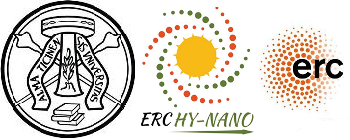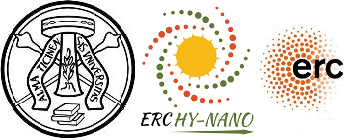The transition to a low-carbon society and green economy by 2050 is one of the biggest challenges in the world to mitigate the dramatic risks associated to climate change. Solar power is gaining more and more attention as a possible solution for covering up to 20% of the Global Energy Demand by 2050. Photovoltaic (PV) devices can provide the world with vast amounts of clean electricity that would vastly exceed our needs and reduce or eliminate carbon dioxide emissions. To do so, we need an affordable, reliable and efficient solar cells. In the last decade,) Hybrid Perovskite (HP) solar cells (HPSC), using methyl ammonium lead iodide (CH3NH3PbI3) as pioneer material, have been revolutionizing the PV scene. With impressive power conversion efficiency (PCE) >25% they are climbing over the existing solar technologies and are widely recognized as one of the most exciting fields of research of our time. However, despite the full potential of this technology and the big excitement that came along, a big barrier hampers their commercialization: the poor device stability under operative conditions (HPSCs degrade in ambient air)

ERC Starting Grant "HY-NANO"
The project aims at solving the stability and toxicity issues developing multi-dimensional hybrid interfaces as lego-bricks for a new efficient, stable, environmentally-friendly solar technology. A synergistic effect resulting from different dimensionalities combined together will lead to interfaces with new physical properties and new functionalities that can be manipulated “ad hoc”. The derived multidisciplinary approach combines the design of new advanced materials (including non-toxic), cutting-edge photophysical investigations, and innovative device concepts (i.e. functionalized molecules as lead trapping layers) that will enable a big jump in materials science, fundamental physico-chemical understanding and technological innovation.

Project FARE
Exploring photoferroelectricity in halide perovskites for optoelectronics (EXPRESS)
Optoelectronics, including energy harvesting systems, sensors, and memories, must sustain this challenge, capitalizing on the development of new generation low-cost semiconductors and on the application of related new physical phenomena. Among others, ferroelectric semiconductors, i.e. materials showing spontaneous electric polarization, have huge potential for applications including memories, field effect transistors, sensors and electromechanical devices. This has been realized by exploiting the possibility of coupling the ferroelectric response with other physical properties. EXPRESS aims to explore the role of potential ferroelectric phenomena in new class of solution-processable polar semiconductors, namely layered hybrid halide perovskites.
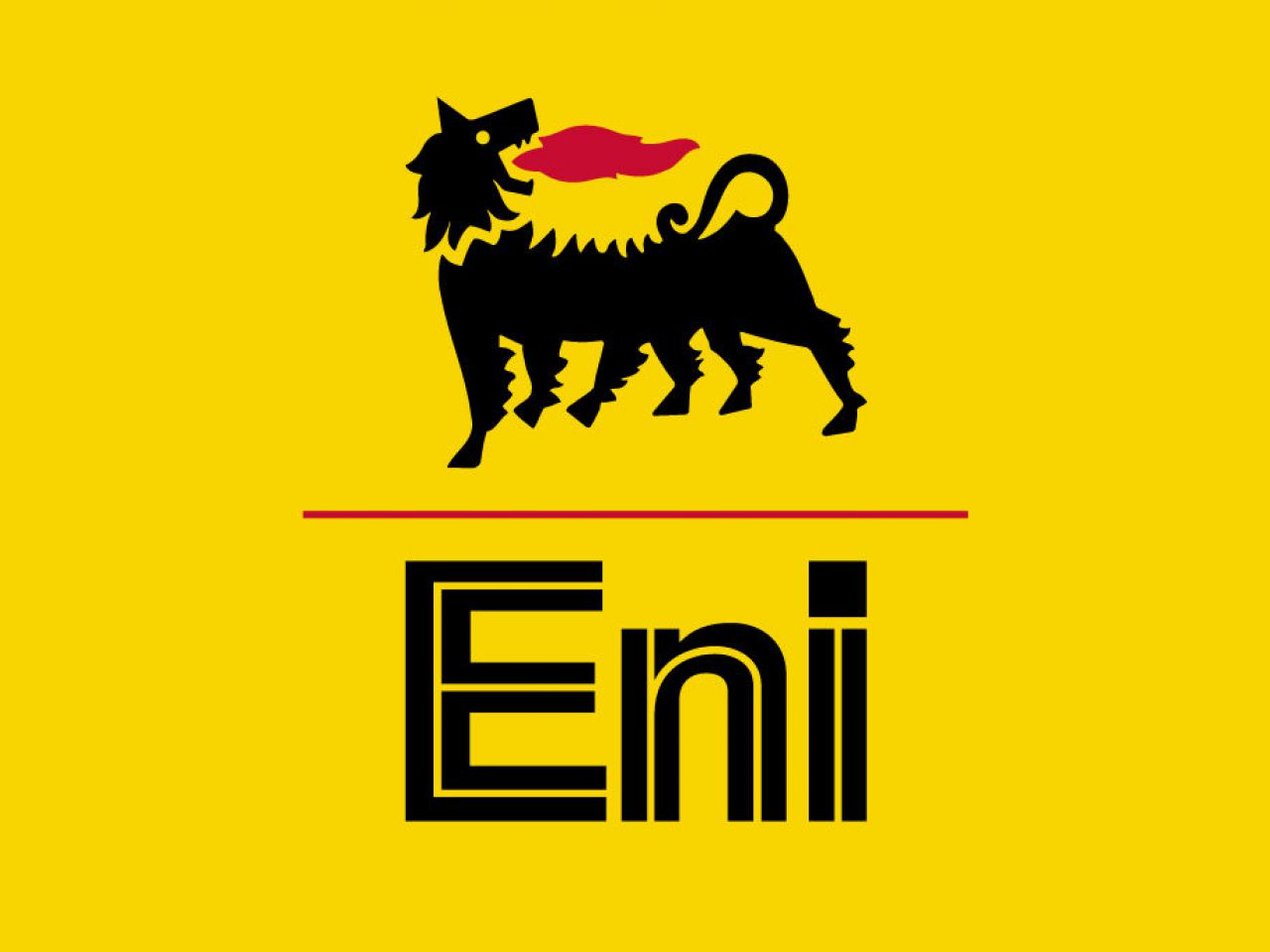
Project ENI
This project, funded and realized in collaboration with ENI S.p.A., focuses on the development of laboratory-scale high efficiency and stable perovskite solar cells. Then the work will be extended to devices and modules with dimensions suitable for commercial integration. Alongside classic power generation, perovskites can promisingly be employed in portable devices, fulfilling new modern needs, for instance, in the IoT field. In fact, their suitability to be printed on flexible substrates, in air, along with their tunable bandgap make these materials an appealing technology to face the new market segments asking for adaptable and flexible devices, where Si solar panels fail.
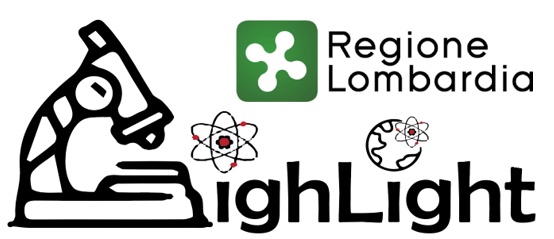
Regione Lombardia highLight@UNIPV
Preserving and improving the health of our planet and its people are 2030 UN Sustainable Development Goals. Nanoscience and biotechnology address these goals through the multiscale design and manufacturing of smart materials, devices, and therapeutics but innovation in this space relies on constantly evolving equipment. HighLight will incubate multidisciplinary teams to create breakthrough green tech and healthcare products and translate them into societal benefits via technology transfer and policy guidance With highLight, we will go beyond this state-of-the-art by introducing technologies to characterize the dynamic behavior of nanomaterials at time scales ranging from atoms (10-15 s) to organisms, communities, and environments

PON React EU
The projects were carried out with funding from: Unione europea - FESR o FSE, PON Ricerca e Innovazione 2014-2020 and aim at investigating the photophysical properties of hybrid perovskite and enhancing the lifespan of the respective solar cells. In order to push perovskite photovoltaics, the methodical improvement of the perovskite thin film, by employing ultra-fast and time resolved optoelectronics techniques, aims to a rational enhancement of the perovskite solar cell performance. In addition, to shield the device from external factors and prevent its degradation, the cell/module encapsulation have been explored. In the project, new materials have been developed and integrated into the lamination process, with the goal of increasing the effectiveness of the encapsulation and enhancing the barrier properties of the materials already in use. These advancements will enable the creation of devices that not only boast high efficiency but also possess the stability to remain competitive in the photovoltaic market.
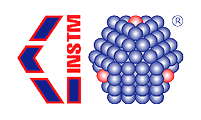
INSTM
National Interuniversity Consortium of Materials Science and Technology
In order to provide INSTM researchers with the opportunity to access expertise, facilities and funding, which are difficult to be tapped by individual research groups, INSTM continues to submit project proposals under the new European Community Framework Programs, aimed at maintaining and increasing the excellence of European research and the technological competitiveness of the European production system as well as collaboration between the industrial system and other actors in the process of knowledge creation/innovation in solving the global challenges identified within the European strategy.

GOPV
The project focuses on the development of materials intended for photovoltaic applications, aiming to evaluate the feasibility of innovative perovskite/silicon or perovskite/perovskite tandem devices. Funding for the project is guaranteed within the "Electrical System Research" program, which coordinates research and development efforts aimed at reducing the cost of electricity for end users. It aims to improve the overall reliability of the electricity system, optimizing the quality of the service offered. At the same time, the aim is to minimize the environmental and health impact deriving from the electricity system, promoting the responsible use of energy resources. Lastly, the project aims to guarantee the country the necessary conditions for sustainable development in the energy sector and support the national plans for decarbonisation of the electricity system.

ERC-PoC
ERC - Proof of Concept
Frontier research often generates radically new ideas that drive innovation and business inventiveness and tackle societal challenges. The ERC PoC Grants aim at facilitating exploration of the commercial and social innovation potential of ERC funded research and are therefore available only to PIs whose proposals draw substantially on their ERC funded research.
Proof of Concept Grants aim at maximising the value of the excellent research that the ERC funds, by funding further work (i.e. activities which were not scheduled to be funded by the original ERC frontier research grant) to verify the innovation potential of ideas arising from ERC funded projects.
The objective is to enable ERC-funded ideas to progress on the path from ground-breaking research towards innovation.
